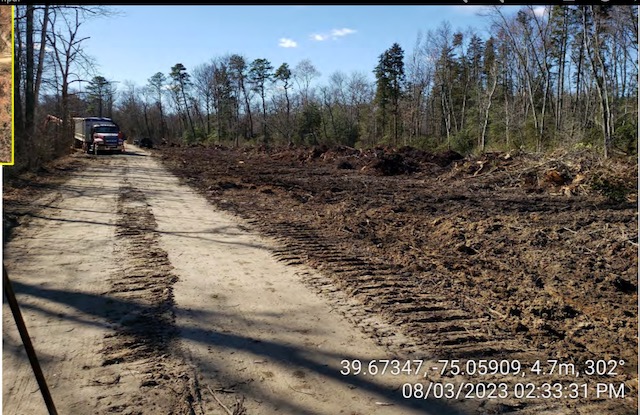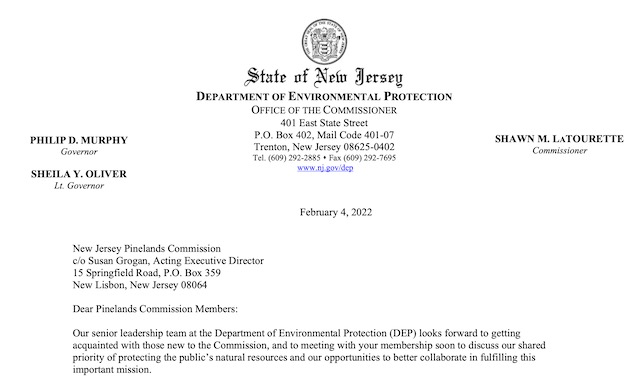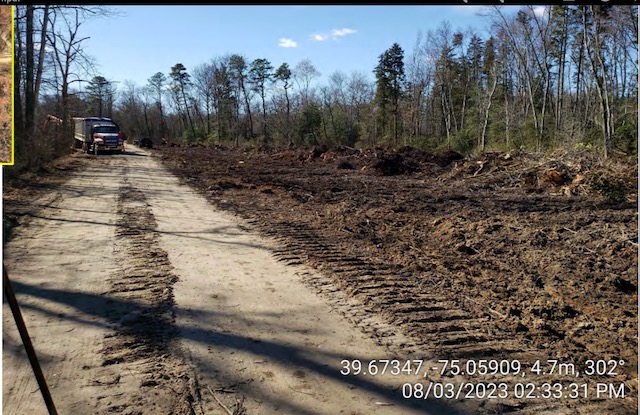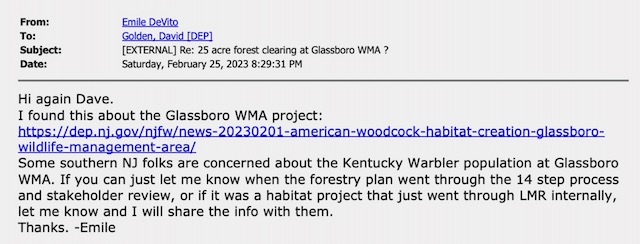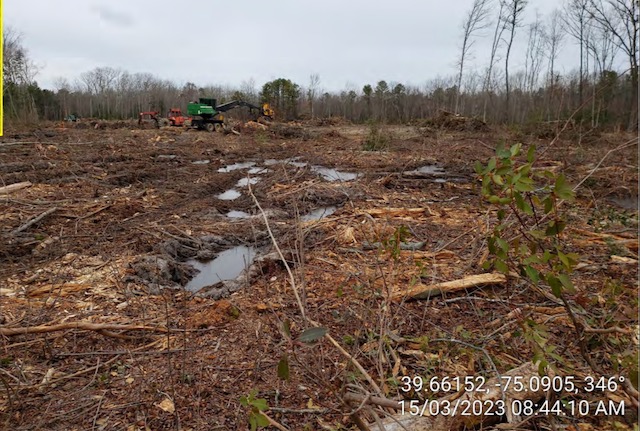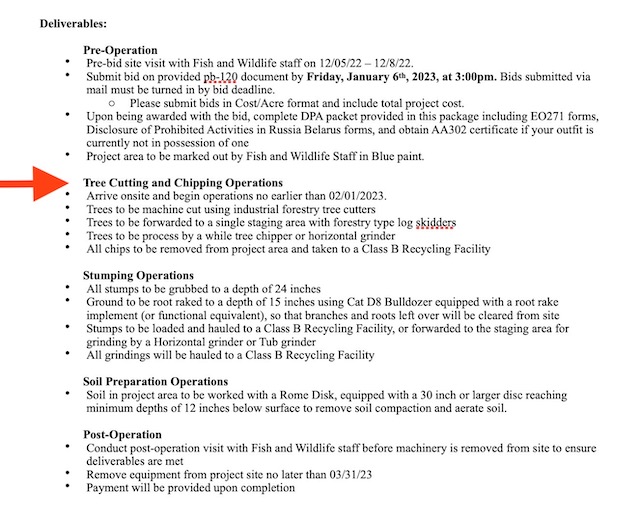DEP Must Halt Pinelands Logging Project In Light Of Glassboro Disaster
DEP Pinelands Roadside Logging Would Look EXACTLY Like Glassboro WMA Clearcut
DEP Plan Would Clearcut 13 Miles Of Pinelands Roadsides & Log 1,400 Acres Of Forest
The above photo was taken by DEP enforcement staff at the illegal Glassboro Wildlife Management Are clearcut. That’s only a couple of hundred feet of roadside clearcut.
But take a good look at it, because – if it is allowed to go forward – the flawed DEP’s Pinelands “Forestry” plan will look very similar, but not for a few hundred feet – but along 13 MILES of Pinelands Roads (100 foot wide clearcut, plus another 100 feet wide intensively “thinned” forest logging and “feathering treatments”.)
DEP calls this clearcutting a “firebreak”.
But abundant evidence and DEP’s own analysis and public statements about previous Pinelands wildfires demonstrate that it will not work. Intense canopy fire, high winds, and blowing embers easily will drive the fire to jump the firebreak.
The DEP Pinelands logging plan was scheduled to begin this March-April.
It must be stopped in light of the Glassboro disaster.
See my letter below to DEP Commissioner LaTourette urging his to stop this logging project – a project, like Glassboro WMA, that got virtually no public review either.
It would be nice if a lot of people and groups made this demand to DEP and asked that it be Statewide in scope. All it takes is a letter to DEP and a press release. I copied Carleton (PPA) and Emile (NJCF) and Sierra Club, but I doubt they will do anything unless you shame them into it (particularly because they all SUPPORTED this DEP plan).
———- Original Message ———-
From: Bill WOLFE <>
To: shawn.latourette@dep.nj.gov, john.cecil@dep.nj.gov, senbsmith <SenBSmith@njleg.org>, sengreenstein <sengreenstein@njleg.org>, sensarlo@njleg.org, asmmckeon <asmmckeon@njleg.org>, asmScharfenberger@njleg.org, carleton@pinelandsalliance.org, emile@njconservation.org, Jaclyn Rhoads <jaclyn@pinelandsalliance.org>, Anjuli Ramos <anjuli.ramos@sierraclub.org>
Date: 04/29/2023 12:44 PM MST
Subject: DEP Must Halt Pinelands Logging Project
Dear Commissioner LaTourette:
In light of significant DEP policy, process, and personnel problems exposed by the disastrous DEP clearcut of Glassboro Wildlife Management Area (WMA), I am writing to urge that you impose an administrative halt on implementing DEP’s proposed forestry plan approved by the Pinelands Commission on October 14, 2022.
This moratorium should be imposed until the Legislature enacts forestry reform legislation and DEP adopts implementing regulations.
The attached photo was taken by the Department at the Glassboro WMA clearcut.
The proposed DEP Pinelands forestry plan proposal to clearcut 13 miles of 100 foot wide roadside “firebreaks” will cause damage that will look very similar to this photo.
Additional forest damage will result from DEP logging of almost 1,400 additional acres.
My understanding was that the DEP Pinelands forestry (logging) work was to begin in March-April of this year.
Please make inquiry to your staff about the status of this plan and immediately take steps to stop it.
Recall that you previously wrote a letter to the Pinelands Commission urging the Commission to adopt that plan, and threatening a lawsuit if they didn’t.
But that was before the public, the Legislature, and the press could see what DEP forestry projects actually look like.
Bill Wolfe
